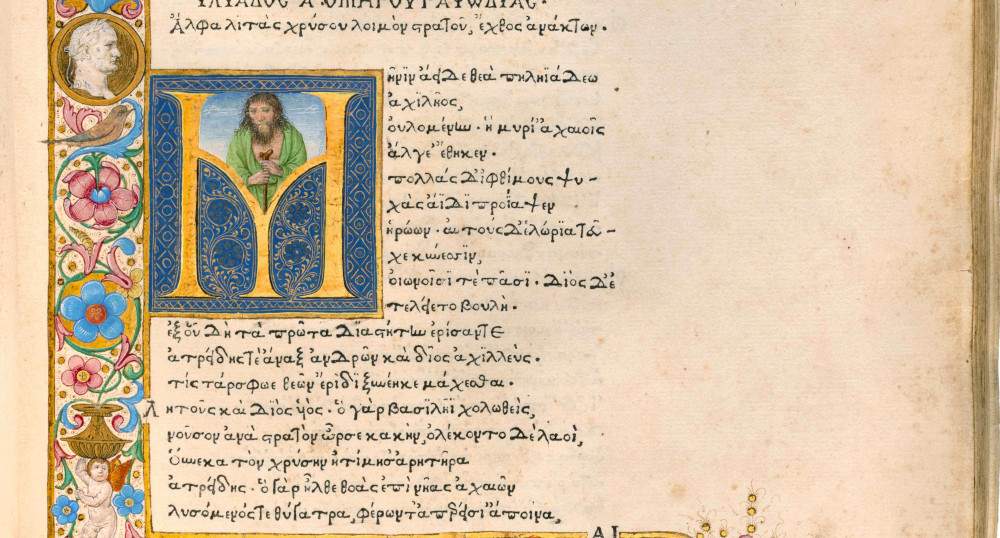Byzantine scholars and Greek students in Renaissance Padua: manuscripts and codices on display
From August 23 to September 11, 2022, Palazzo Zuckermann in Padua presents the exhibition Tra Oriente e Occidente. Byzantine Scholars and Greek Students in the Paduan Renaissance, curated by Niccolò Zorzi and born of the collaboration between the Civic Museums of Pad ua and the Department of Linguistic and Literary Studies - DiSLL of the University of Padua, with the contribution of the Cariparo Foundation. The exhibition is part of the events organized on the occasion of the 24th International Congress of Byzantine Studies, which will bring to Padua more than a thousand scholars active in the field of Byzantine studies, and the celebrations for the 800th anniversary of the University of Padua (1222-2022).
The exhibition is dedicated to the passage from East to West, that is, from Byzantium to Italy and Europe, of Greek texts and Byzantine scholars between the 15th and early 16th centuries-a historical and cultural phenomenon of epochal significance, for it was then that the West recovered knowledge of the legacy of ancient Greece. Western humanists first approached many Greek texts through the mediation of Byzantine scholars who left Byzantium and Constantinople during the 15th century to become masters and professors, copyists, and printers in many cities of the Italian peninsula. This cultural exchange had one of its highest moments between Padua and Venice, where the vibrant Greek community also welcomed students from the eastern Mediterranean who came to attend courses at the Studio. For centuries Padua played a decisive role as a place of education for Greek students. Privileged witnesses to this are the books: manuscripts, incunabula and cinquecentine, collected here for the first time from Padua’s collections. The exhibition presents twenty-nine pieces, including nineteen Greek codices, two archival pieces, and eight printed books, divided into six sections. All the materials on display come from libraries in Padua; five are the lending institutions: Biblioteca Antica del Seminario Vescovile di Padova, Biblioteca Civica di Padova - Sezione Storica, Biblioteca Universitaria di Padova, Museo Bottacin - Musei Civici di Padova, Università degli Studi di Padova - Archivio Generale di Ateneo.
The materials on display include Greek codices produced in the East, in Constantinople, by Byzantine scholars and copyists, and codices produced in the West, especially in Padua and Veneto, by Italian humanists who had learned Greek. Among the exhibits are Dioscorides’ famous herbarium, with miniatures of plants, produced in Constantinople in the 14th century, a copy of a late antique manuscript now preserved in Vienna; theIsolario by Cristoforo Buondelmonti, with a view of Constantinople and images of many islands in the Aegean Sea; the printed edition of Homer edited by Demetrio Calcondila, the first professor of Greek in Padua from 1463 to 1475, with exquisite miniatures, including a portrait of Homer. Among the illustrated codices are the magnificent seventeenth-century album of the councillors of the natio ultramarina; the fifteenth-century archival registers noting the degrees of famous and unknown students, including the Byzantine scholar Giovanni Argiropulo, a student in Padua from 1441 to 1444; and the"codicetto Bottacin," with vivid depictions of Paduan and Venetian figures, including the rector of students. Other pieces are important because of the texts they contain and who copied and annotated them: as a whole, they make it possible to reconstruct the ways in which humanists learned Greek (many grammars and school texts are on display) and approached ancient texts, reading, translating and commenting on them.
Hours: Daily from 10 a.m. to 7 p.m. Closed on non-holiday Mondays.
Free admission.
 |
| Byzantine scholars and Greek students in Renaissance Padua: manuscripts and codices on display |
Warning: the translation into English of the original Italian article was created using automatic tools. We undertake to review all articles, but we do not guarantee the total absence of inaccuracies in the translation due to the program. You can find the original by clicking on the ITA button. If you find any mistake,please contact us.




























